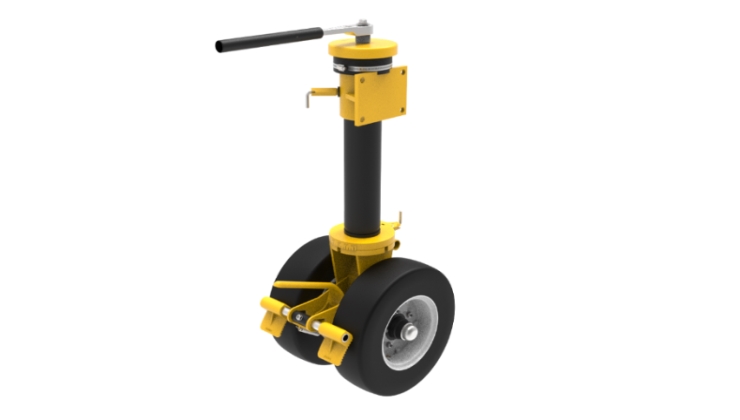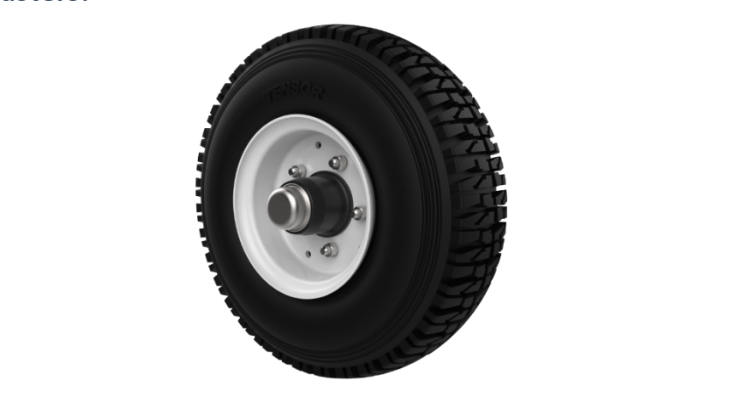Aerospace casters play a pivotal role in the aviation industry. They ensure the smooth operation and maneuverability of ground support equipment. This not only enhances functionality but also enhances safety standards.
In heavy-duty industrial settings, the right aviation casters bear critical loads while maintaining stability and efficiency. Selecting suitable casters involves considering load capacity, environmental conditions, and durability.
This article guides you through these considerations, ensuring an informed choice for optimal performance and safety in aerospace applications.
Understanding Aerospace Casters:
Aviation casters are specialized. They provide essential support and mobility to aircraft ground equipment. These aerospace casters must withstand varied and extreme conditions, often carrying extremely heavy loads.
Their design prioritizes durability, stability, and precise control, which are key for aerospace operations. This section explores these specialized casters’ unique attributes and functions in the aviation sector.
Key Considerations for Choosing Aerospace Casters:
-
Nature of Application:
Aerospace casters must align with the specific needs of aviation operations. Each application dictates unique aircraft maintenance, cargo handling, or ground support equipment requirements. Tailoring caster choices ensures optimal functionality and safety in each specific use case.
Customization plays a crucial role in caster selection. It involves adjusting caster specifications like size, material, design, and wheel material to meet the distinct demands of various aerospace applications. This customization enhances performance and operational efficiency.
-
Load Capacity:
Load capacity is a critical factor in caster selection. Choosing casters supporting the required weight is essential for maintaining safety and functionality. This involves understanding the weight dynamics of different aerospace equipment and their load distribution.
Casters with the appropriate load capacity ensure stability under heavy loads. They prevent equipment damage and enhance safety, which is crucial in high-stakes aviation environments. This necessitates a careful evaluation of weight-bearing capabilities when selecting casters.
-
Environmental Conditions:
Aerospace casters must withstand diverse environmental conditions. This includes extreme temperatures, varying terrains, and potential exposure to chemicals. Casters designed for these conditions ensure reliable performance regardless of external factors.
The material selection for casters is key in adapting to environmental challenges. Materials resistant to corrosion, temperature fluctuations, and chemical exposure extend the lifespan and reliability of the casters in harsh aerospace environments.
-
Durability and Maintenance:
Durability is a cornerstone in selecting aerospace casters. High-end casters offer longevity, reducing the need for frequent replacements. This long-term investment is economical and ensures continuous operational efficiency.
Maintenance considerations are vital in caster selection. Opting for casters that are easy to maintain, with readily available parts and simple servicing procedures, minimizes downtime and enhances overall operational productivity in aerospace settings.
Specialty Casters for Specific Aerospace Needs:
-
Pneumatic Casters:
Pneumatic casters featuring rubber wheels on metal hubs are crucial in transporting sensitive loads. Their design allows smooth movement over various surfaces, from grassy areas to industrial floors. The rubber tread creates a positive grip on the surface and is especially suited for environments with standing water. These casters are especially beneficial in minimizing damage to fragile cargo due to their excellent shock absorption capabilities.
These casters are known for their quiet operation, ideal for noise-sensitive environments. Their versatility across different terrains and load capacities makes them a preferred choice for diverse aerospace applications.
-
Jacking Casters:

Jacking casters offer unique adjustable height features, enhancing the efficiency of aircraft maintenance and repair tasks. Their design allows for precise vertical adjustments, making them suitable for uneven surfaces and specialized equipment settings.
These casters come in various mounting options and materials, including steel or aluminum, and can handle a wide range of loads up to 23,000 lbs. Their ability to maintain stability and performance at high speeds and different heights makes them invaluable in complex aerospace operations.
-
Spring-Loaded Casters:

Spring-loaded casters with Industrial-type coil springs adapt seamlessly to varying load conditions. They provide exceptional shock absorption, ensuring the safety and integrity of the payload, whether the cart is empty or fully loaded.
These casters offer a smoother ride, minimizing damage during transport. They maintain directional integrity, ensuring straight-line travel even on uneven surfaces. Additionally, their maintenance-free design, with no need for air pumps or concerns about flat tires, enhances operational efficiency and reduces downtime.
Special Features of Aerospace Casters:
-
Shock Absorption:
Spring-loaded and cushion thread wheels are integral for superior shock absorption. These technologies ensure a smoother ride, protecting the payload and equipment from impact-related damages. This feature is particularly crucial for heavy-duty industrial casters in aerospace environments, where equipment protection is paramount.
-
Versatility:
The versatility of aerospace equipment is significantly improved with jacking and pneumatic casters. These types enable easier and more precise movement, essential in the intricate and confined spaces often encountered in aviation settings. Their role is vital in enhancing operational efficiency and safety.
-
Safety Features:
Safety is a top priority in aerospace caster design, with advanced braking systems and ergonomic features being standard. These elements ensure secure and controlled movement, reducing the risk of accidents and enhancing user comfort during operations, a critical aspect of maintaining high safety standards in the industry.
-
Material and Build Quality:
The choice of materials and the build quality of aerospace casters are pivotal for their durability and performance. High-quality materials ensure these casters can withstand the demanding conditions of aerospace environments, extending their lifespan and reliability.
Best Practices in Aerospace Caster Selection:
-
Custom Solutions:
Custom-designed casters offer significant advantages for specific aerospace applications. This approach ensures that each caster meets the unique operational requirements, enhancing efficiency and safety. Aerol excels in providing custom caster solutions and tailoring products to meet specific aerospace requirements.
-
Compliance with Standards:
Ensuring that aerospace casters comply with industry standards is crucial. Compliance guarantees safety, reliability, and quality, aligning with regulatory demands and best practices in aviation.
Aerol rigorously ensures that our aerospace casters comply with industry standards and regulations.
Aerol – Top-Notch Manufacturer of High-Quality Aerospace Casters
Aerol stands out as a leading manufacturer in the aerospace caster industry. Our reputation is built on producing high-quality, reliable aviation casters. We offer a diverse range of casters, catering to various needs in aviation. This includes ground support equipment and heavy-duty industrial applications.

